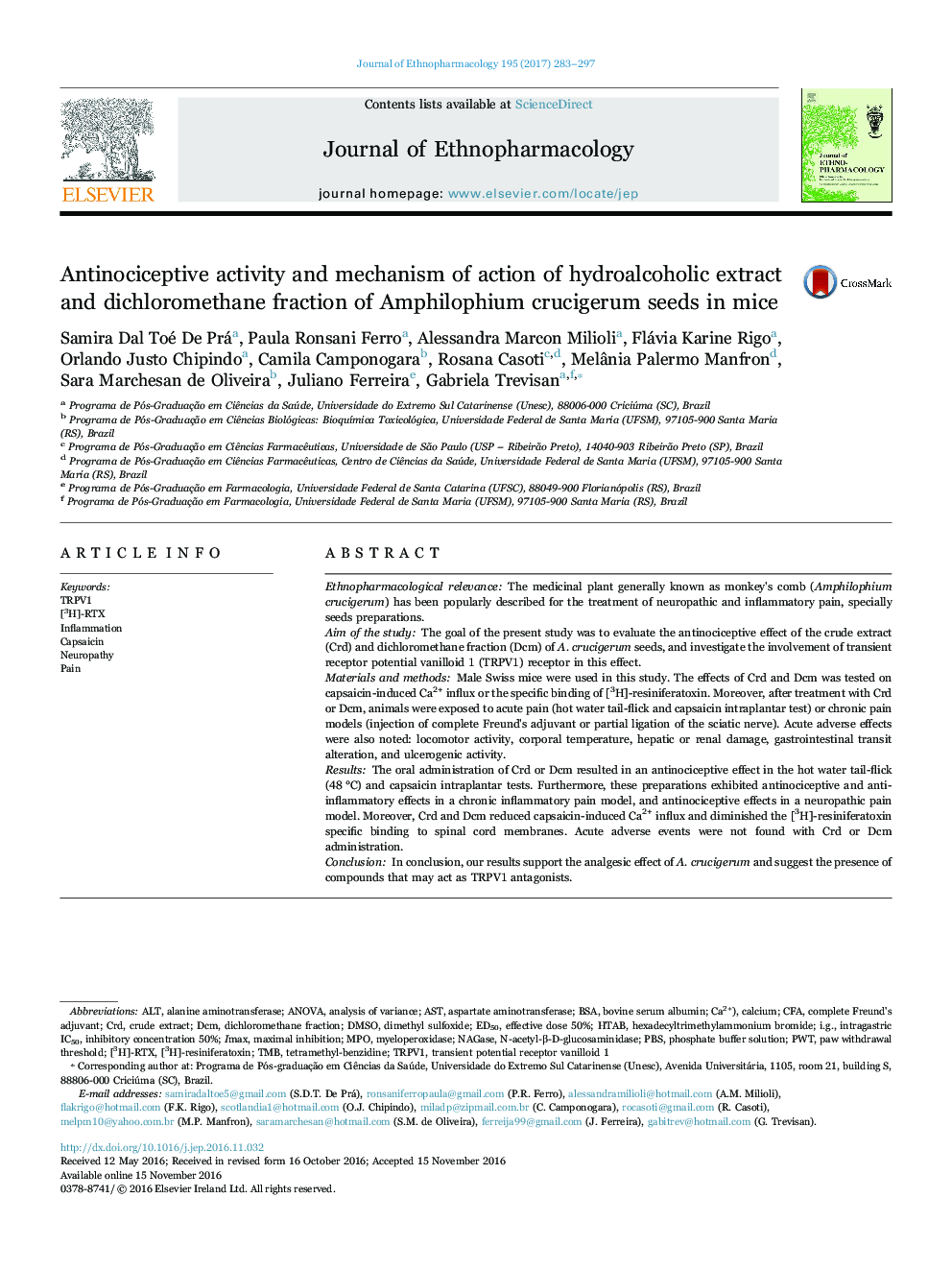| کد مقاله | کد نشریه | سال انتشار | مقاله انگلیسی | نسخه تمام متن |
|---|---|---|---|---|
| 5556394 | 1560367 | 2017 | 15 صفحه PDF | دانلود رایگان |

Ethnopharmacological relevanceThe medicinal plant generally known as monkey's comb (Amphilophium crucigerum) has been popularly described for the treatment of neuropathic and inflammatory pain, specially seeds preparations.Aim of the studyThe goal of the present study was to evaluate the antinociceptive effect of the crude extract (Crd) and dichloromethane fraction (Dcm) of A. crucigerum seeds, and investigate the involvement of transient receptor potential vanilloid 1 (TRPV1) receptor in this effect.Materials and methodsMale Swiss mice were used in this study. The effects of Crd and Dcm was tested on capsaicin-induced Ca2+ influx or the specific binding of [3H]-resiniferatoxin. Moreover, after treatment with Crd or Dcm, animals were exposed to acute pain (hot water tail-flick and capsaicin intraplantar test) or chronic pain models (injection of complete Freund's adjuvant or partial ligation of the sciatic nerve). Acute adverse effects were also noted: locomotor activity, corporal temperature, hepatic or renal damage, gastrointestinal transit alteration, and ulcerogenic activity.ResultsThe oral administration of Crd or Dcm resulted in an antinociceptive effect in the hot water tail-flick (48 °C) and capsaicin intraplantar tests. Furthermore, these preparations exhibited antinociceptive and anti-inflammatory effects in a chronic inflammatory pain model, and antinociceptive effects in a neuropathic pain model. Moreover, Crd and Dcm reduced capsaicin-induced Ca2+ influx and diminished the [3H]-resiniferatoxin specific binding to spinal cord membranes. Acute adverse events were not found with Crd or Dcm administration.ConclusionIn conclusion, our results support the analgesic effect of A. crucigerum and suggest the presence of compounds that may act as TRPV1 antagonists.
254
Journal: Journal of Ethnopharmacology - Volume 195, 4 January 2017, Pages 283-297